Dee Estuary Birding
Monthly Newsletter...
December 2021 Newsletter
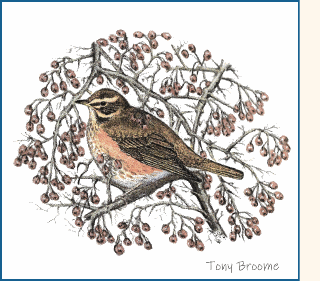
Hilbre Bird Observatory Ringing Report
July to September 2021
When I saw this Hilbre Bird Observatory Ringing
Report (published in
the November 2021 CAWOS Bird News) I immediately asked them if I could
reproduce it in this newsletter as it is a fascinating description of
an exceptional three months ringing and observing on Hilbre.
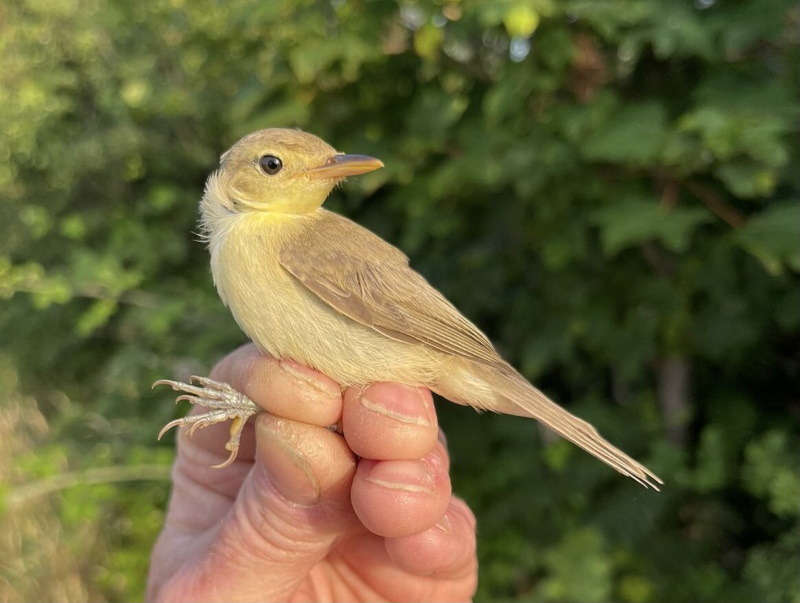
HILBRE BIRD OBSERVATORY (HIBO) Ringing July to September 2021
The summer on Hilbre was viewed in the past as an unimportant time on the island, a time for bird observatory members to attend to other things. This year was different and members attended as frequently as they did in the spring migration period. Thank goodness they did, that 3-month period was as eventful as any other period in the island's development.
It was stated in the last Hilbre report for CAWOS that Linnets had done well, breeding productivity was high. It turned out that this was the best Linnet breeding season since records began, a great result for this red-listed species holding its own on Hilbre. Other breeding birds did well too with Blackbirds producing several broods and the Rock Pipits were shown to be resident. Ringing recoveries of adults demonstrated this, and they were productive with many young establishing themselves round the islands.
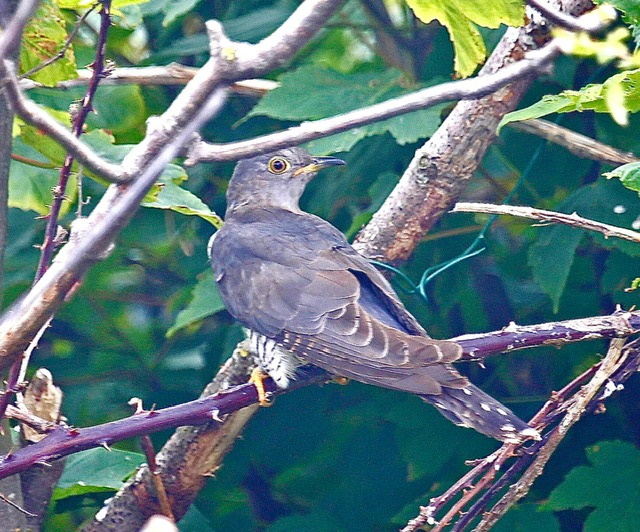
On 1st July a juvenile Cuckoo was caught and ringed, this was the first since 2013. What a start to the summer! Juvenile Whitethroat, Chiffchaff, Blackcap, Song Thrush and Grasshopper Warbler were all caught and ringed. The first Willow Warbler after the spring migration was caught on 16th July, was this post-juvenile dispersal or migration? A Great-spotted Woodpecker, a juvenile, was caught and ringed. This was the third for the island, the first arriving in 2015. Then it was 20th July. On the 20th a Melodious Warbler was caught and ringed. This was the first since 1994 and the third for the island overall. A day later a Hoopoe turned up, paid a brief visit to the island but to members’ and visitors' frustration it remained on the west of the island and avoided all the trapping areas.
Along with all this excitement 14th July brought a
remarkable event. A Redwing was caught and ringed. The bird was an
adult and was undertaking a full moult. Redwings do not generally spend
the summer in the UK and their full moult usually takes place after a
breeding attempt. What had that bird been up to and where had it been
when it was up to whatever it was up to?!
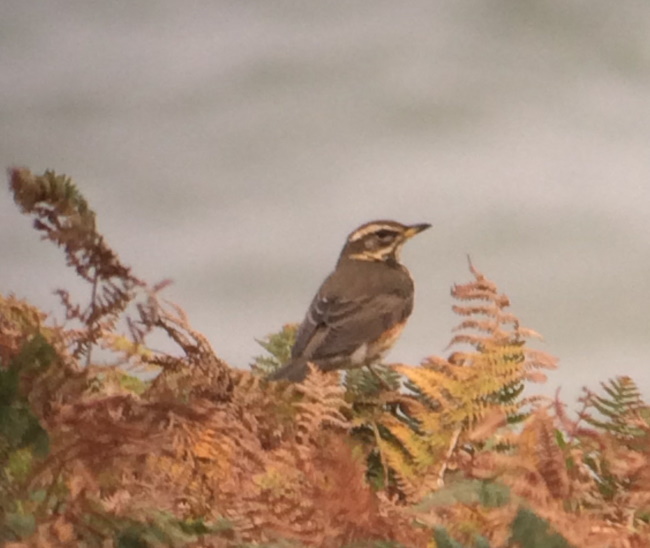
August found the activity on the island unabated,
not quite the excitement of July but nevertheless a southern migrant
hawker dragonfly was a first for the island. The Hilbre record was a
confirmation that this dragonfly is expanding its range northwards. A
juvenile Redstart and Stonechat were both ringed at the beginning of
August and nominate race Wheatears were also caught and ringed. The
Wheatears represented long-distance migrants as did the Whitethroats
and Willow Warblers that were also ringed in August. These
long-distance migrants will have bred in the UK unlike most of the
Wheatears that were ringed in September. These were birds of the
Greenland race which usually breed in Iceland, Greenland or Canada.
Hilbre has more years where no Greenland race Wheatears are caught in
autumn than years where that race of birds are caught.
Hilbre was part of Franz Bairlein's Wheatear network as was David Hussell from the Long Point Bird observatory. Both Franz and David attached geolocators to Wheatears; Franz had 3 geolocators recovered from Wheatears breeding in Alaska and David had 1 geolocator recovered from a bird he had ringed in lqaluit in Canada. Geolocators are reasonably good at identifying longitude but not very good at identifying latitude, especially at the time of the equinox when Canadian Wheatears migrate across the Atlantic. David explained that his geolocator recovery showed that his Wheatear had crossed the Atlantic in 4 days but he did not feel that his data could reliably identify where in Europe the Wheatear landed.
Following on from David Hussell's data, it seems likely that his Canadian Wheatears that are on their way to their wintering grounds in West Africa are affected by weather conditions over the Atlantic, in particular hurricanes in and around the Caribbean and their northern aftermath. In years where there are no hurricanes at this time of year the Wheatears from Canada/Greenland/ Iceland make landfall in Europe somewhere south of the UK and do not turn up on Hilbre. In years where there is hurricane activity at the right/wrong time, as in 2021, Wheatears are pushed further north than they would like and land in the UK, hence their arrival at Hilbre.
There is probably no simple explanation of why the summer of 2021 produced so many interesting and unexpected ringing records on Hilbre. The increased effort by members during the period probably accounted for some of the records, but there may have been a better than average breeding season in the UK that meant more birds were moving about either on migration or on post-juvenile dispersal. Improvements in the UK breeding season may be a result of global warming. The unexpected number of Greenland race Wheatears ringed was probably just a result of the weather over the Atlantic, but this weather effect could not have been responsible for the increased number of other long-distance migrants or relatively sedentary birds around the island.
It will be interesting to see what next summer brings.
John Elliott, on
behalf of Hilbre Bird
Observatory
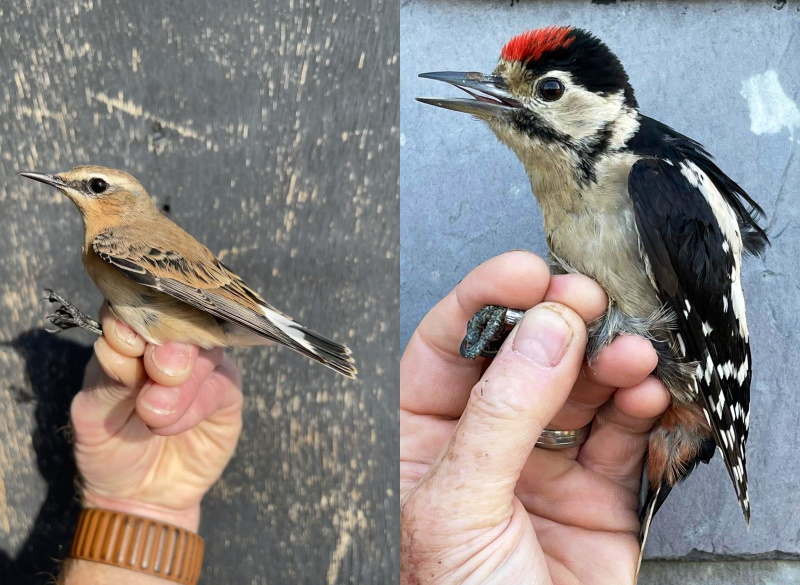
Colour Ring Report
Shelducks
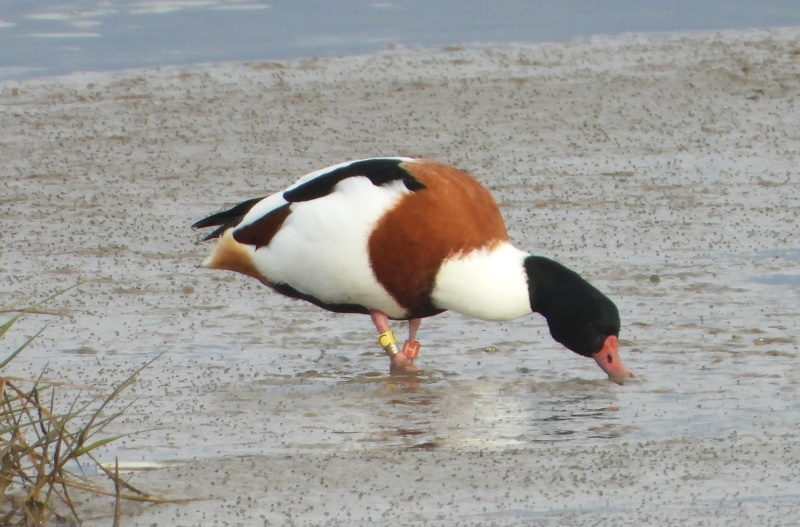
H on red ring/C on
Yellow ring.
Ringed in the Lower Derwent Valley NNR, Yorkshire, on 18/05/2018.
Recorded on Meols Shore on November 13th and 18th 2021.
This is our ninth Shelduck ringed in the Lower Derwent Valley and shows
where some of our over-wintering Shelduck breed.
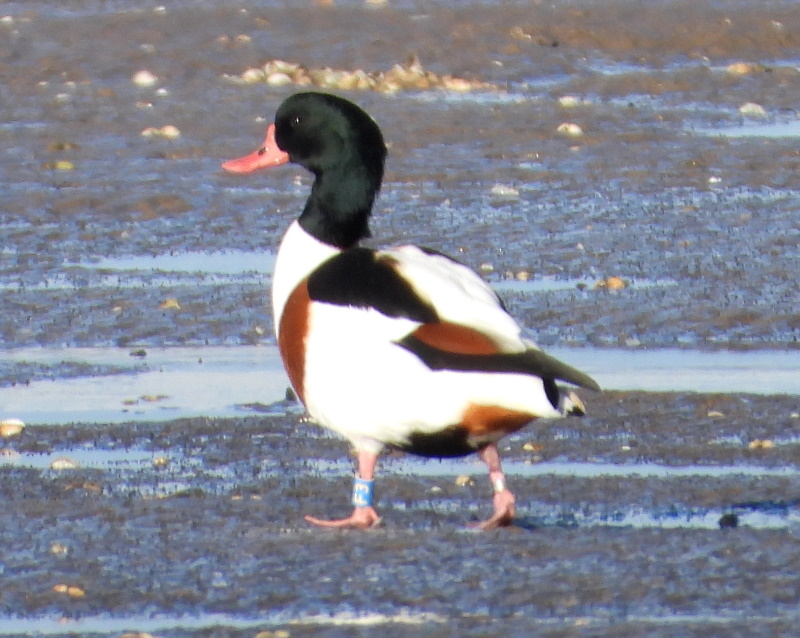
Blue (F3)
Ringed at WWT Martin Mere, Lancashire, on 25/11/2019.
Recorded back at Martin Mere from January to April 2021.
Recorded on Thurstaston Shore (by DSC causeway) on several dates in
October and November 2021.
We often see the same colour-ringed Shelducks in exactly the same
feeding area day after day, including this one. This is despite the
fact they move to float on the high tide, usually off Heswall, but then
fly back to the same spot when the tide goes out.
Black-headed Gull
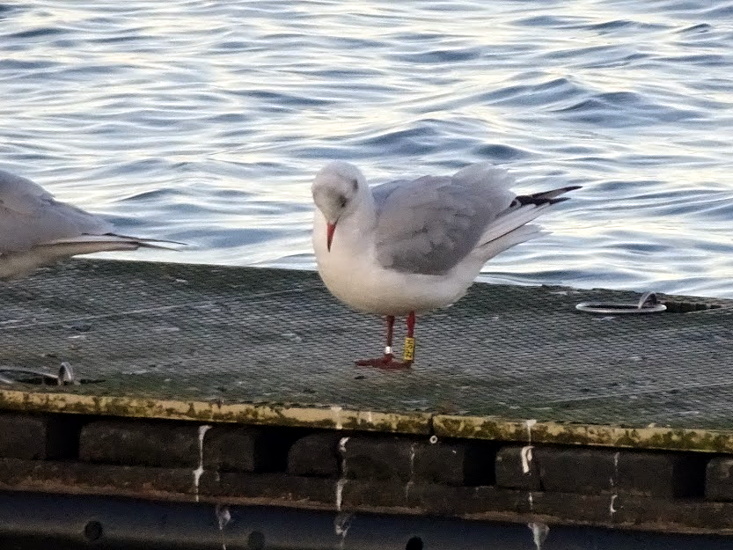
2PSH on a Yellow ring.
Ringed at Pitsea Landfill Site, Essex on 12/03/2016
Only ever recorded at West Kirby where it was seen in the autumn of
2016, 2017 and 2018. Then no other records until 19/11/2021. Where has
it been for three years??
Great Black-backed Gull
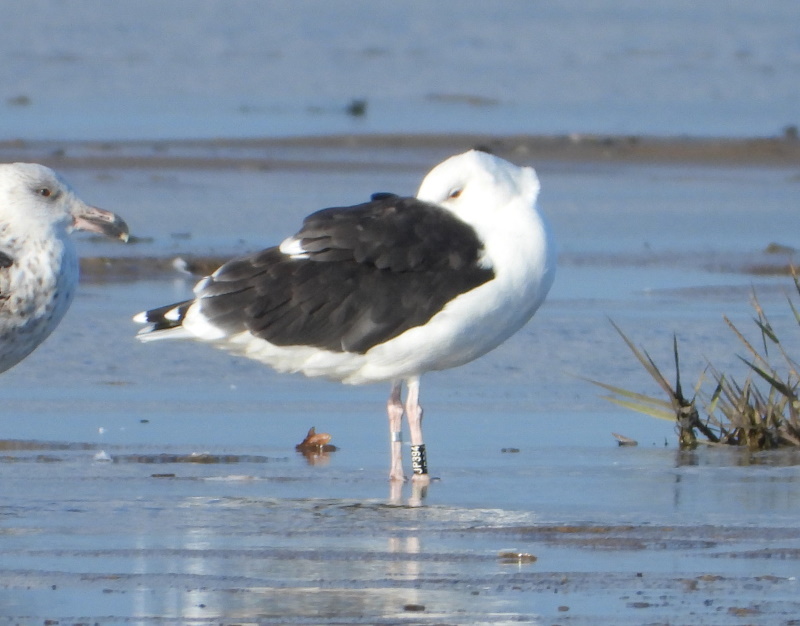
JP394 on Black ring.
Ringed at Hidlekjeoy, Rogaland, Norway, on 19/6/2013.
Recorded at Albion Landfill Site, Leicester & Rutland, in July and
October 2013, and February 2015.
Seen on Hoylake Shore in July and September 2015.
It was recorded back, or near, the breeding site in Norway in 2017 and
2019.
Recorded on Hoylake Shore on 03/11/2021.
Knots
The Knots returned in force in November and Steve
Hinde and I recorded no less than 264 with colour rings/flags. Two
different populations of
Knot visit us in the Dee Estuary. One is the Irish Sea population seen
mostly on the Liverpool Bay coasts, adults moult and feed here so are
present from July to May, in addition immature birds spend the summer
here. The second population moult on North Sea coasts (mainly the Wash
and the Waddensea) and we generally only see these birds on the Dee
Estuary from late October to early April. Below is the life history of
two colour-ringed Knots, one from each population.
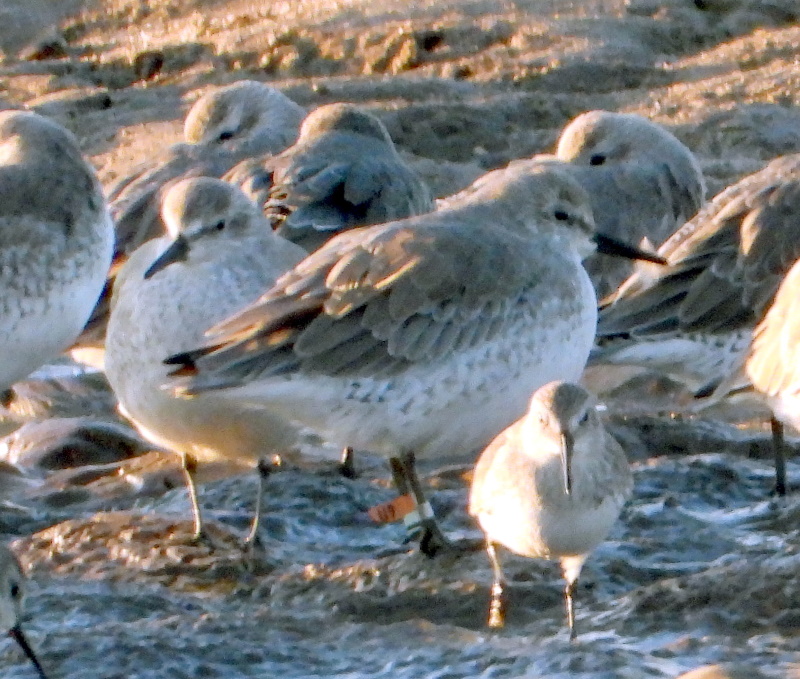
Oflag U9
Ringed at Altcar (south of Formby beach) on 22/09/2017.
September 2017 was when the first Knots were fitted with orange flags
and this bird was one of the first seen on the Dee Estuary being at
Caldy in October 2017.
It has been recorded on the Dee Estuary every winter since except for
the winter of 2018/19 when there were no sightings, but it was at
Walney Island in April 2019 so may have spent the winter in Morecambe
Bay. It was in north-east Scotland in early May that year, presumably
on the way north to breed. It has been seen spotted at Formby after
breeding in late July/early August both 2018 and 2019 when it would be
moulting.
It was also recorded on spring migration in SW Iceland in May 2018.
Recorded at Ainsdale in April 2021 and at Thurstaston on 19th and 24th
November 2021.
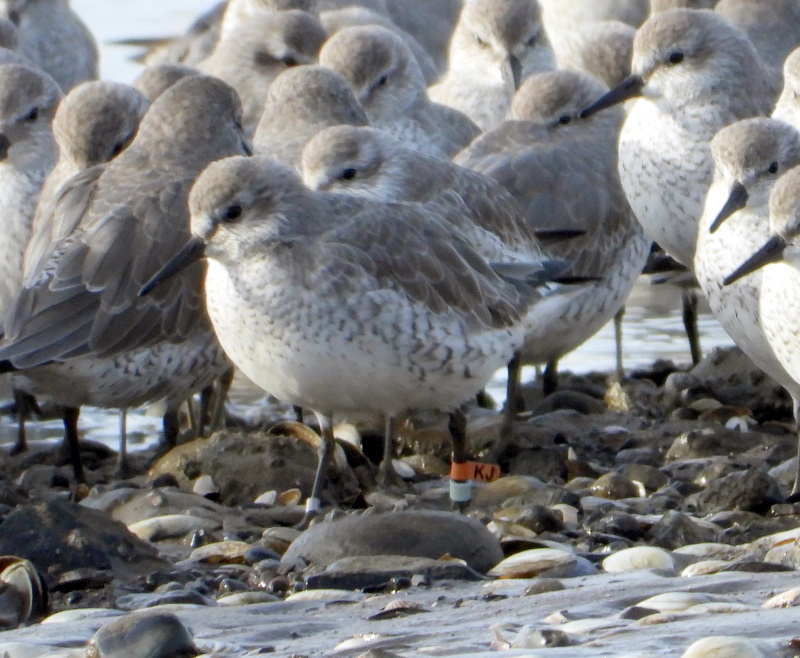
Oflag KJ
Ringed at Altcar (south of Formby beach) on 22/09/2017.
Although ringed at the same time as U9 this bird must be from the North
Sea population judging by subsequent records.
After being ringed it wasn't seen at all for over a year until it was
recorded on the island of Griend in the Dutch Waddensea in October
2018. It was almost a year until the next record which was at
Snettishan, north Norfolk, in September 2019.
So it was a bit of a surprise when the next sightings were at
Thurstaston on 25th and 29th November 2021.
Colour Rings were recorded by Richard Smith, Steve
Hinde, Mark Peers, Derek Bates, Allan Hitchmough and Steve Williams.
November Bird News
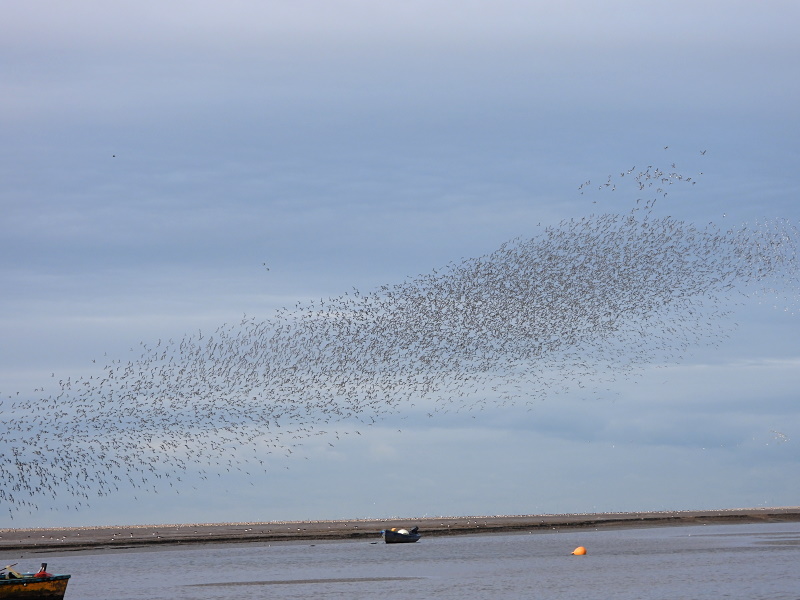
After wondering why Fieldfares were largely absent
in October we did see some in November although not in particularly big
numbers but nice to see, plenty of Redwings about as well. But November
was more notable for late departures rather than arrivals, with no less
than eight Swallows recorded, the latest being one at Burton Mere
Wetlands on the 25th. Two Ring Ouzels were seen - one by Leasowe
Lighthouse on the 8th and one in Meols on the 14th. Especially
intriguing was a good but brief view of a Lesser Whitethroat in David
Thompson's garden at Lower Heswall on the 29th, about five weeks later
than any previous record of this species in Cheshire and Wirral. Hugh
Pulsford, the County Recorder, said "I have had another report of one
in Warrington. Please take any photos you can please, as these birds
tend to be of eastern origin, but their taxonomy is complex and
confusing. In particular photos showing the tail feathers, notably the
outer ones, in addition , although Lesser Whitethroats call give a
“tack” type of call, eastern birds also give a Blue Tit like call,
chee, chee, chee." Unfortunately that one brief view is all we got.
When this website started in 1998 Brent Geese
numbers on the estuary were typically around 10, numbers then started
to rise steeply and over the last three winters counts have stabilised
at a maximum of just over 400, a remarkable increase. But in November
we saw another big increase with a max of 612 on the 18th. These were
spread along the channel east of the Hilbre islands between Little Eye
and the main island, sheltering from a fresh westerly at first light.
Through the month they seemed to be flying in overnight, or perhaps
at first light, and then dispersing elsewhere.
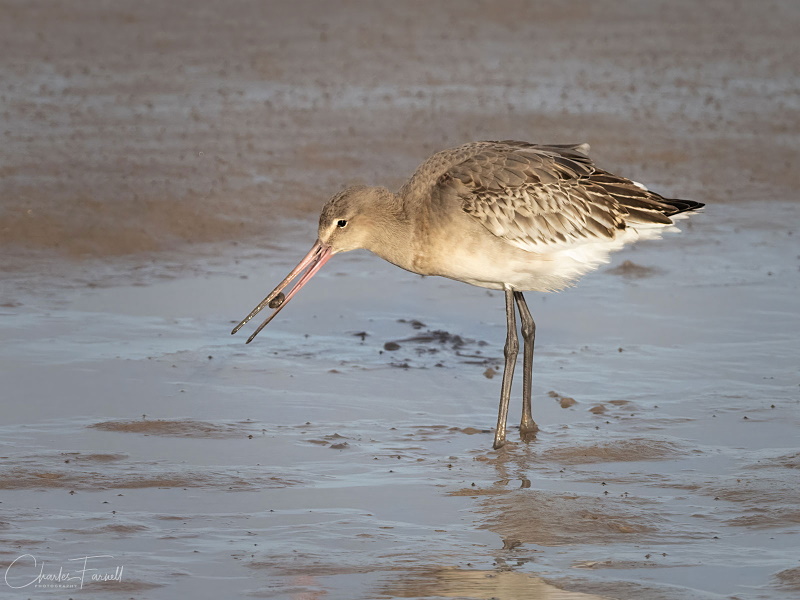
There were plenty of waders on the estuary and north Wirral as you would expect at this time of year and around the third week of the month Dunlin seemed to be everywhere. I expect there must have been at least 20,000 in total and at low tide Dawpool Bank was covered with them, and there were at least 15,000 at Hoylake during the spring high tides. Black-tailed Godwits are common on the estuary but unusual along north Wirral. I don't recall ever seeing any on Meols shore before but around 20 took to feeding there regularly through the month.
Goosanders have become regular on West Kirby Marine
Lake in recent years and there was a record high count of 18 there on
the 29th.
It was good to see Short-eared Owls back on the marshes and six were in the air together on the 14th off Denhall Quay. The highest count of Marsh Harriers was at least 10 at Parkgate on the 20th, and there were several observations of much interaction between them and the Short-eared Owls. There were at least four Hen Harriers spotted including one grey male.
Last but not least was a Dusky Warbler at Talacre from the 13th to 15th showing well in a wood not far from Point of Ayr car park. I believe this is only the eight ever seen in Wales, and the last one seen in Flintshire was at Point of Ayr in November 1997.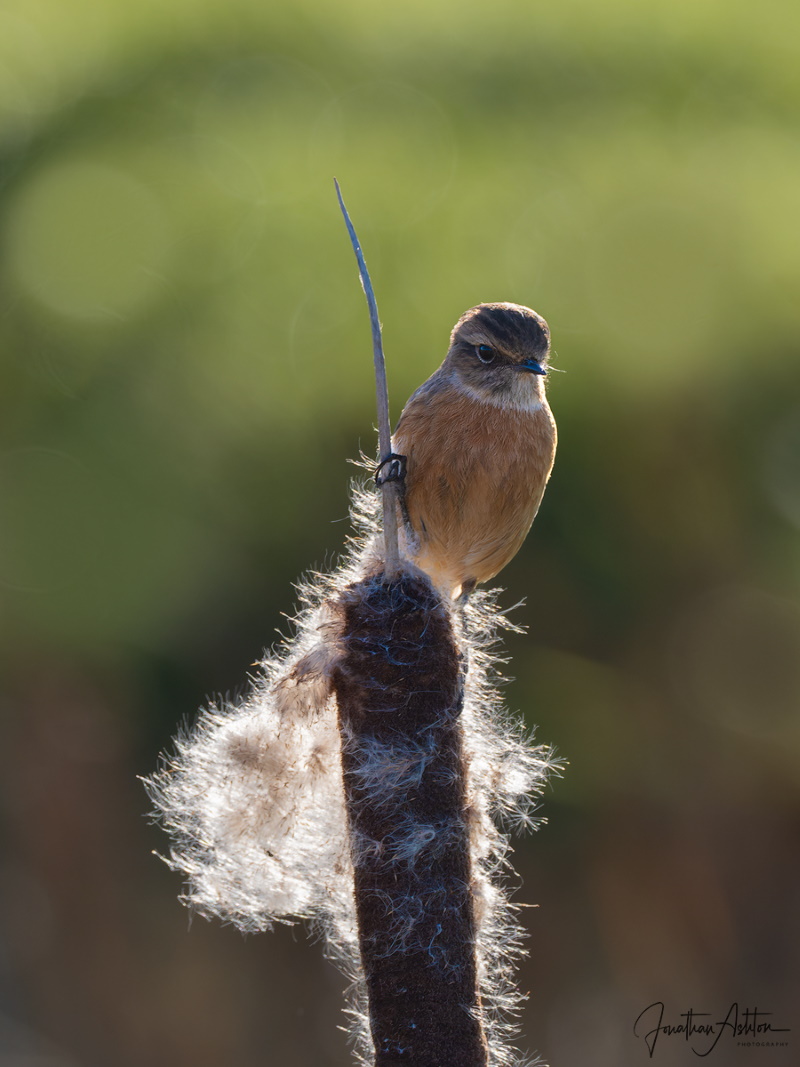
What to expect in December
In the first week of the month there are some high
spring tides which
may well result in spectacular wader roosts at Hoylake and Point of
Ayr. They will probably not be high enough to cover the marshes but it
will certainly result in masses of wildfowl being flushed from the
saltmarsh edge with thousands of Pintail, wigeon and Teal in view, and
in particular Pink-footed Geese. Flocks of the latter will be feeing in
coastal fields and are often seen in the Pensby and Irby area, as well
as in flight heading south to the Dee flood meadows south of Chester.
Marsh Harriers will certainly be seen and it will be interesting to see
just how many fly into the roost in Neston Reed Bed, perhaps more than
20. Last winter we also had one or two Bitterns on the marshes which
were also often spotted flying into he reed beds. We also usually get
at least six Hen Harriers and the grey males are always spectacular to
see. So far this winter it's been good for Short-eared Owls so
lets hope they stay for a few more months.
December last year saw the arrival of eight Snow Buntings on Hoylake
Shore which stayed for several weeks attracted by the proto Sand Dunes.
On West Kirby Marine Lake we have already seen a record number of
Goosanders in November so we should see plenty of them along with a few
Red-breasted Mergansers and Goldeneyes, both the latter two species are
unfortunately decreasing in numbers. They can also be seen out to sea
along with a few Eiders and Scaup as well as a few hundred Great
crested Grebes, and a Great Northern Diver is always a possibility.
But perhaps what I most want is some lovely cold frosty and still
weather over the Christmas period when it's a joy to be out and about
doing some birding!
Forthcoming Events
December Highest Spring Tides (Liverpool)
Also see Tides page.
4th December, 10.58hrs (GMT), 9.7m.
5th December, 11.39hrs (GMT), 9.8m.
6th December, 12.23hrs (GMT), 9.8m.
7th December, 12.23hrs (GMT), 9.6m.